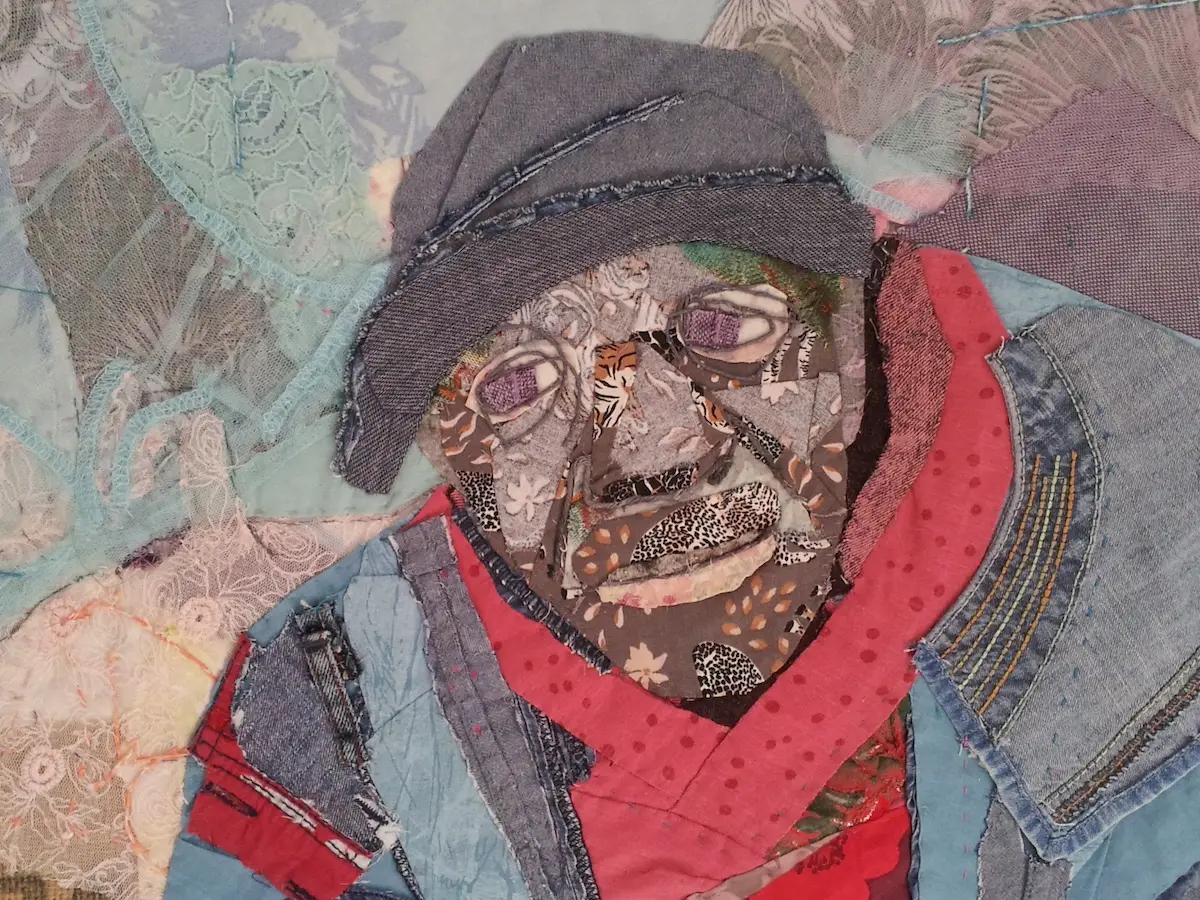Anne Smith transforms recycled garments into painterly quilts, layering texture, history, and humanity into every stitch. Her work is as much about honoring the stories in old fabrics as it is about exploring her enduring curiosity as an artist.

How did you find yourself on an artist’s path? When did you first realize you are a creative person?
Growing up in the 1960-70’s in a working class home, we had plenty of freedom but little money or entertainment. I liked to make things but we had no paint or glue in the house so I’d make flour & water paste and it would all come apart or turn mouldy.
I asked the teacher at school if I could borrow a paintbox over the weekend, but she said no.
You weren’t allowed new paper, you’d have to work on the back of someone else’s old painting. I’d get engrossed in a painting then get told off for making a mess.
As an Amazon Associate I earn from qualifying purchases. Read more about our affiliate linking policy.
It might have discouraged some kids, but being the stubborn person I am, it had the opposite effect.
My dad would watch Westerns on Sunday afternoon and I’d be fascinated by the Indians and their clothes, all decorated with beads and tassels. A neighbour gave us a bundle of old fabrics and by trial and error I made an Indian doll. I took it very seriously and I never needed anyone’s help or opinion – I’d do it all on my own. It didn’t need a face, I was adamant about that. This was the start of my art career, aged 8.
At school I wasn’t academic, so I gravitated to sports, music and art, where I didn’t have to sit still and listen and write. When teachers encouraged me in painting & pottery I found something I was good at. Sister Bernadette taught me embroidery in a class of one, whch was a brilliant experience. I chose in the end to go on and study Ceramics at art college, but later when I started teaching they had a roomful of sewing machines and I became interested again. And then I discovered American contemporary Art Quilts which looked like paintings, and this was the spark.
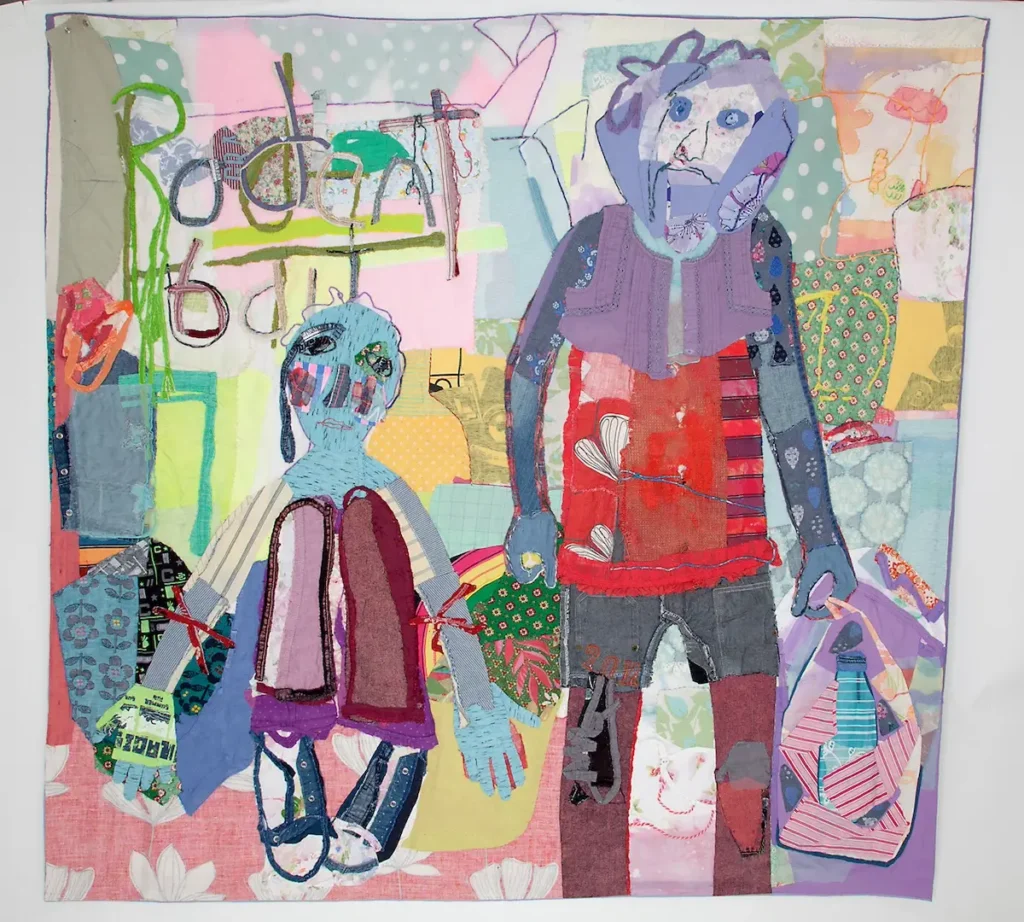
Your work is so painterly, but made with textiles. What techniques do you use to create your art?
Very simple techniques, deliberately so, and all hand-sewn these days: applique, layering, piecing, simple running stitch, couching.
I do look at paintings but I’m not trying to imitate painting. If anything, my background in ceramics has been more influential, in terms of textured surfaces – building up a crude hand-built surface using seams, pockets etc. Although I am a lover of well-made things, here it’s all about the raw feel of things and the right fabric language for the subject.
Does an idea inspire a work of art, or do the materials launch an idea?
Nothing is ever done on a whim. An idea percolates for a very long time: it has to be strong enough because it takes so long to make. I develop a relationship with the people and the story.
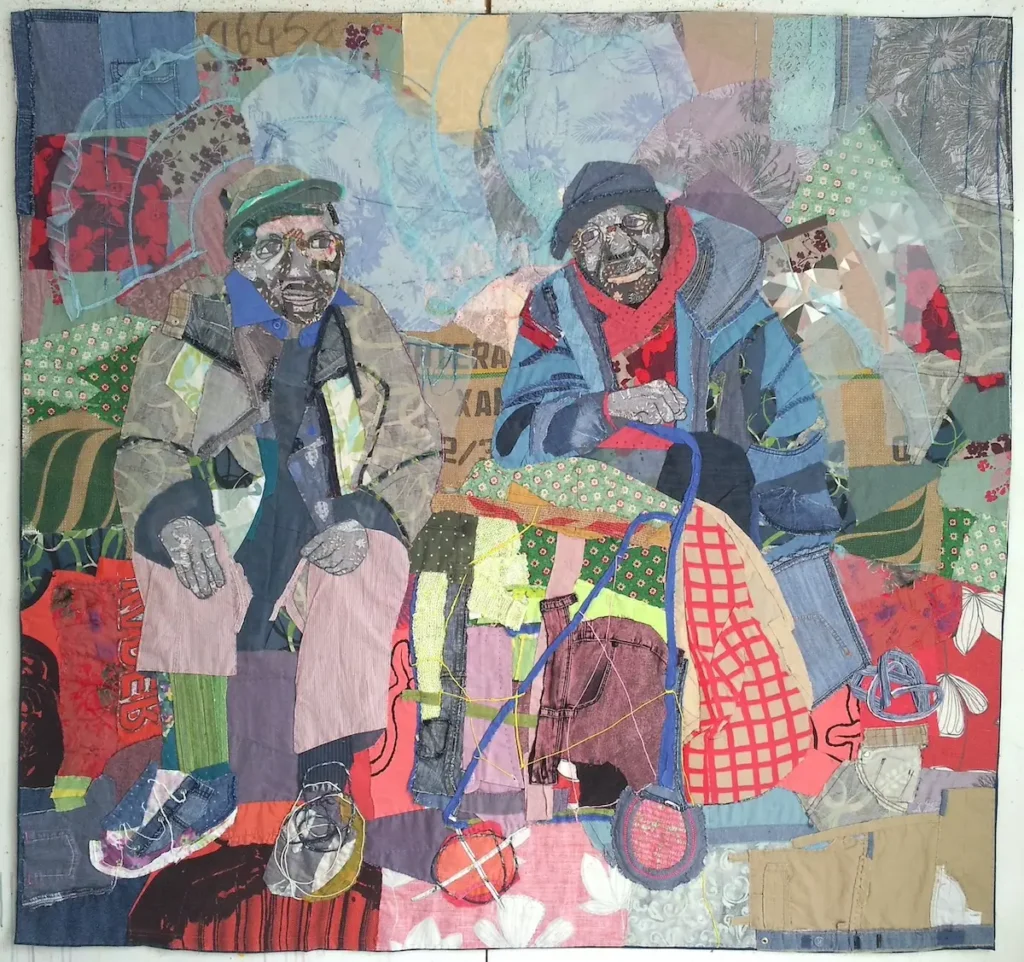
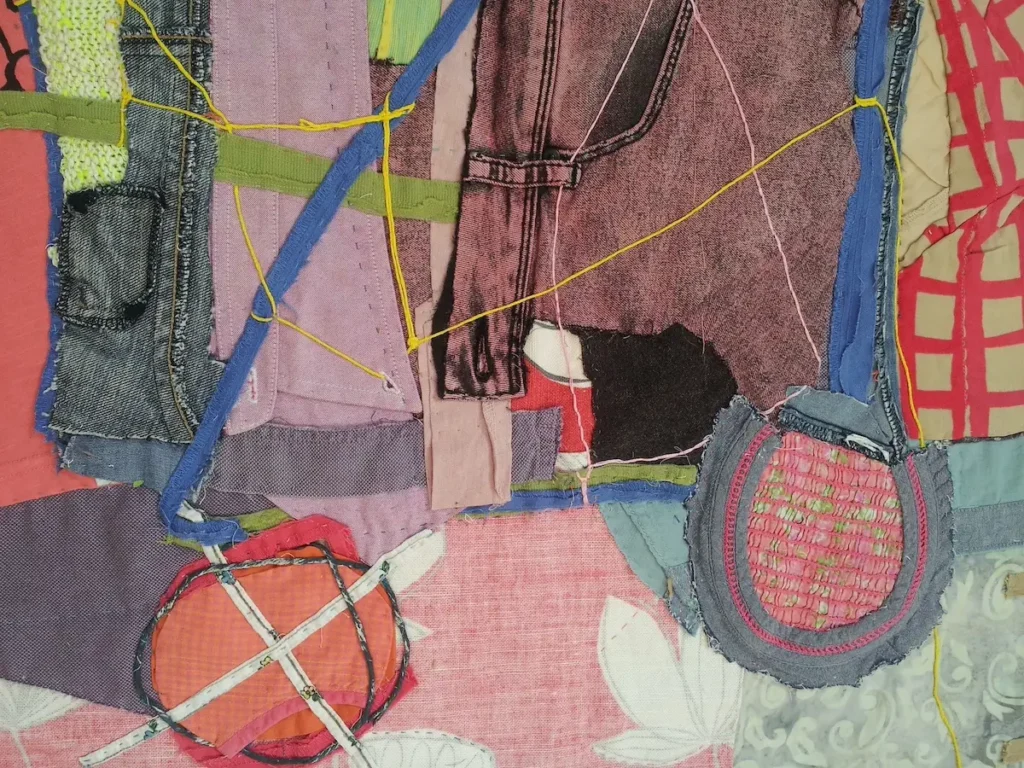
You work with recycled clothes. Do you purchase with a project in mind? Or purchase what speaks to you from the racks.
After 30 years it’s mostly instinct (ie experience): I’ll dive on something like heavy twill red trousers in a charity shop and have to have them regardless of cost. Especially if they’re linen, which I love for its flexibility. I can spot things a mile off.
At other times I go looking for specific things. I have a stash of old garments and bits, my mental library catalogues every bit and where it came from.
Do you plan your work out ahead of time, or do you just dive in with your materials and start playing?
I don’t plan too much, wanting leave it open and not join all the dots, so that I can get surprised and entertained along the way instead of it just being a mechanical task.
A tiny thumbnail size drawing starts me off (one quilt began on the back of a bingo ticket with a blue marker pen) then I semi-plan it, loosely compose, but let the materials speak too. This is what makes quiltmaking different from painting – fabric can make a surface come to life in a way that paint struggles to.
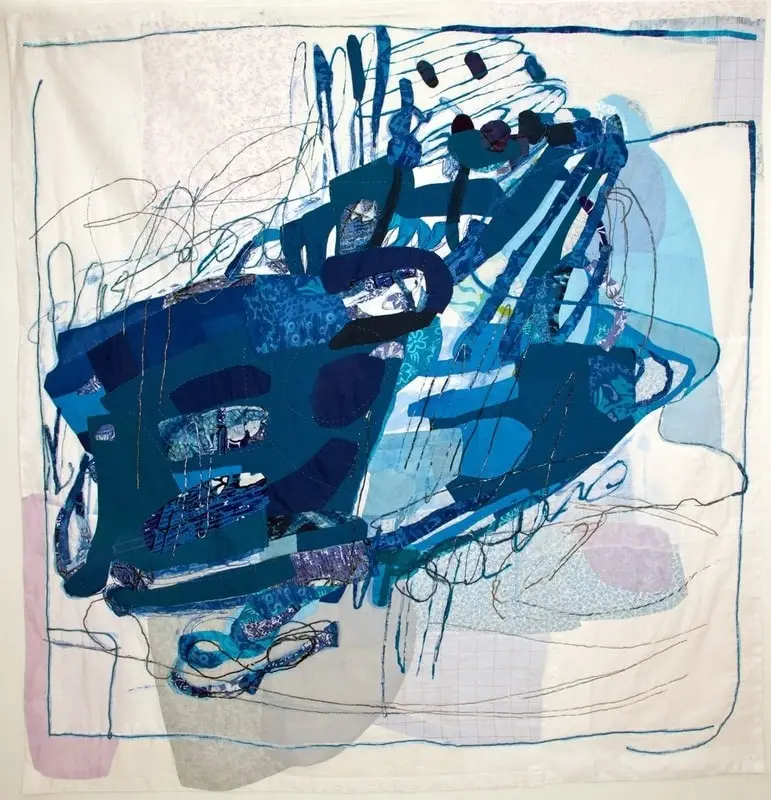
Are you a “finisher”? How many UFOs do you think you have?
I focus on one quilt at a time and go right through to from start to finish.
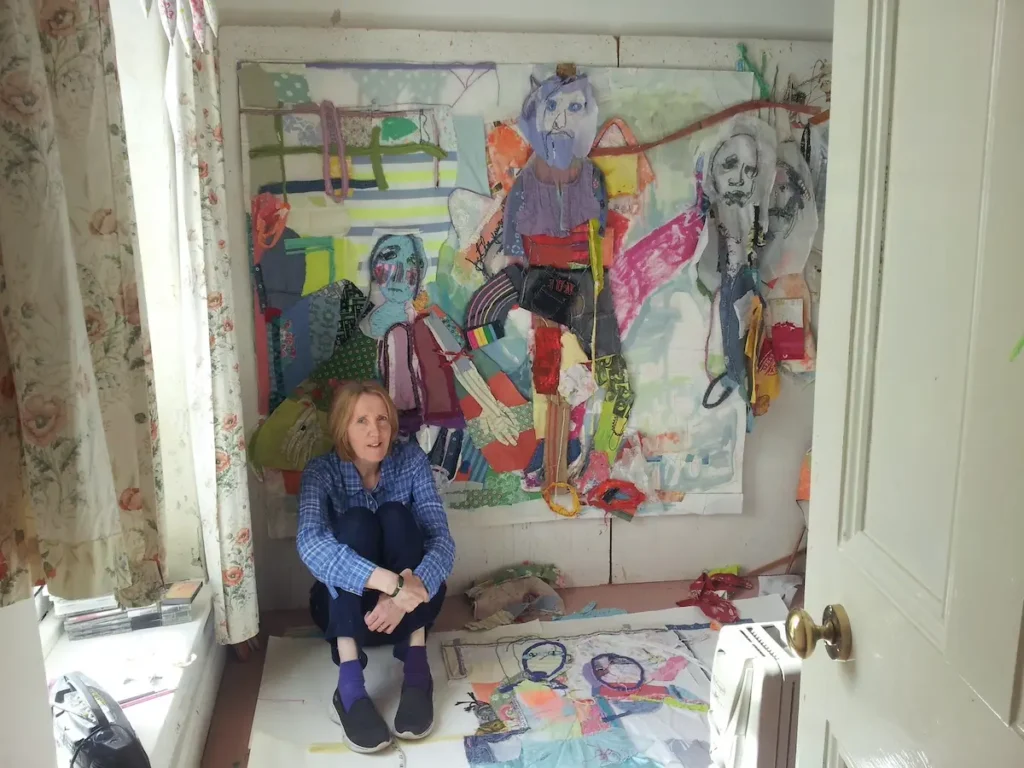
Describe your creative space.
For 20 years I worked in a tiny upstairs back bedroom, the entire floor space was the size of one quilt so I had to stand or sit on it to sew. To get a view of it I’d take it down and lay it flat in the yard then run back upstairs and look down from the window.
Now I have our ex-garage which is a little bit bigger, and I have pinboards on the wall that I can piece things together on.
What is your favorite storage tip for your fabric and creative supplies?
I have a bit of pigeon-holed colour storage, but I don’t keep it too rigid or too tidy.
I throw stuff on the floor and look for combinations of colour & pattern, instinctive sparks that might work together.
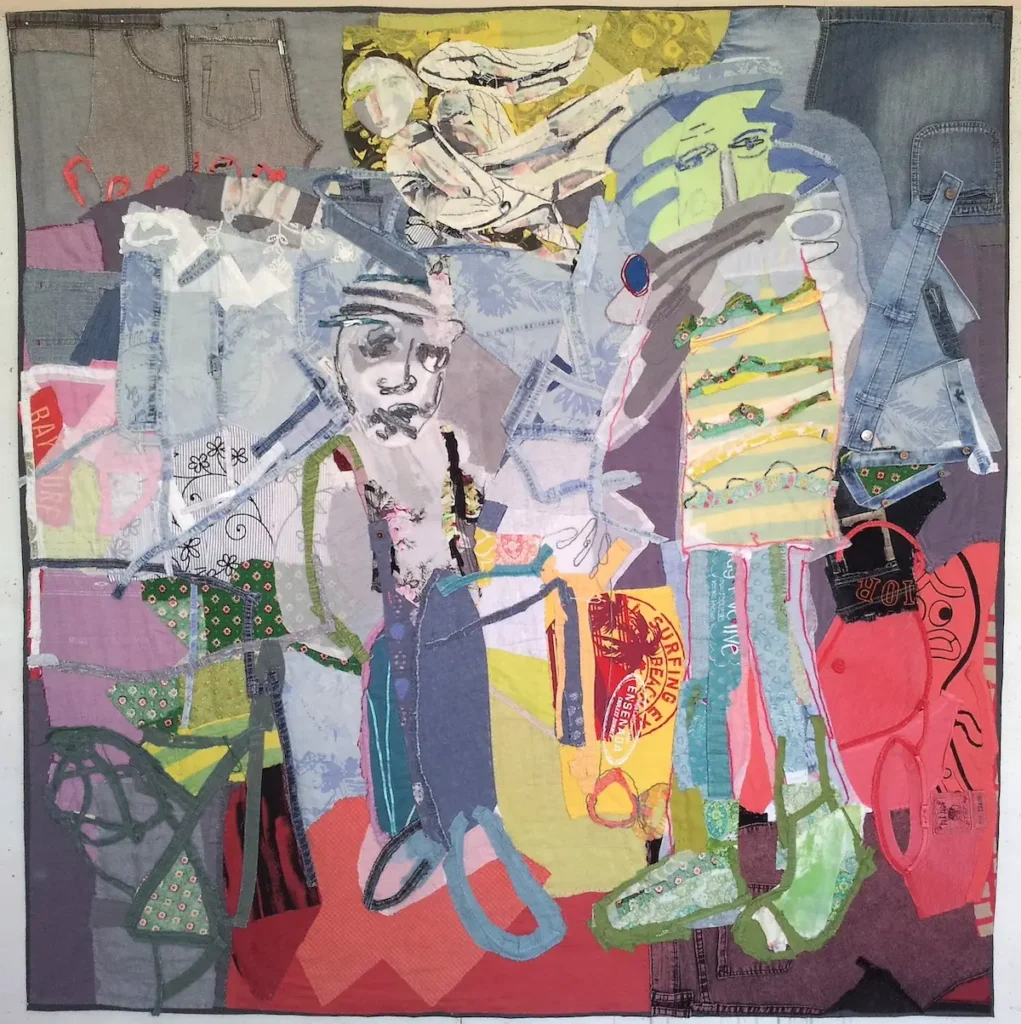
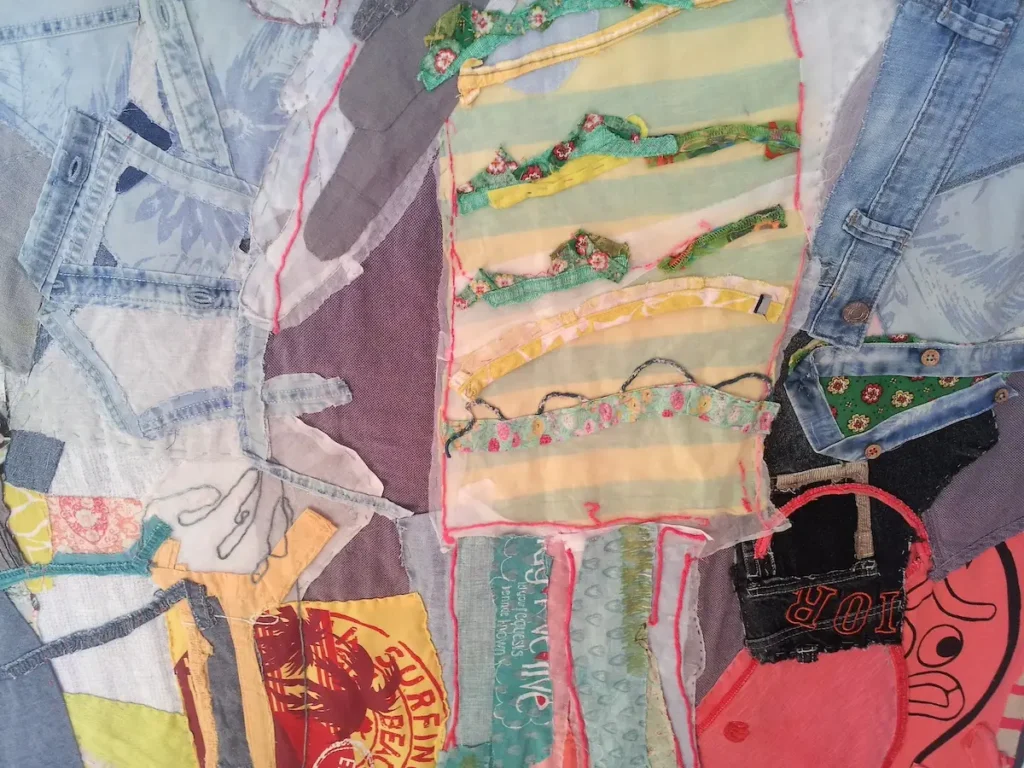
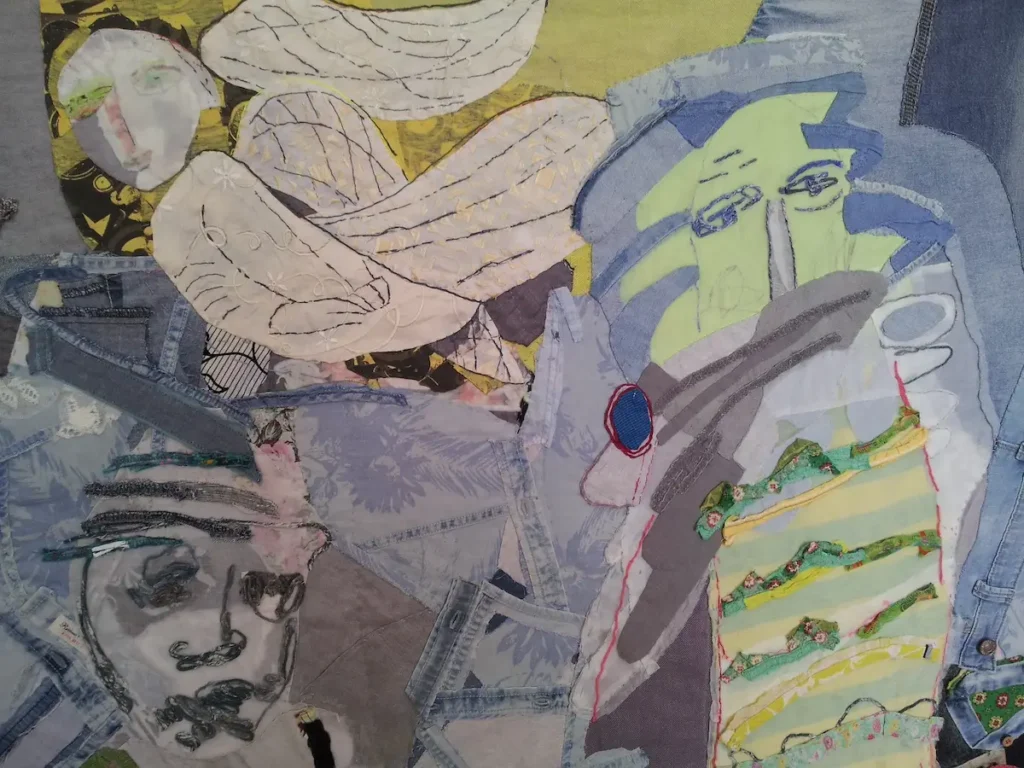
How often do you start a new project? Do you work actively on more than one project at a time?
Every few months an idea that’s been hovering, simmering, bubbling… will pass the ‘has it got legs’ test. I’ll project a little thumbnail sketch on to a huge piece of paper and work on that quickly in paint, actual size, to visualise it. And the quilt will takes its start from this painting.
Can you tell us about the inspiration and process of one of your works? How does a new work come about?
I’m drawn to frailty, no-frills raw humanity. looking in a face, into a soul. They’re all real people I’ve met and felt a connection with. I feel I am helping to honour their lives, and to mend them in some way. I am very conscious of this ‘mission’, to contribute what I can in my own terms.
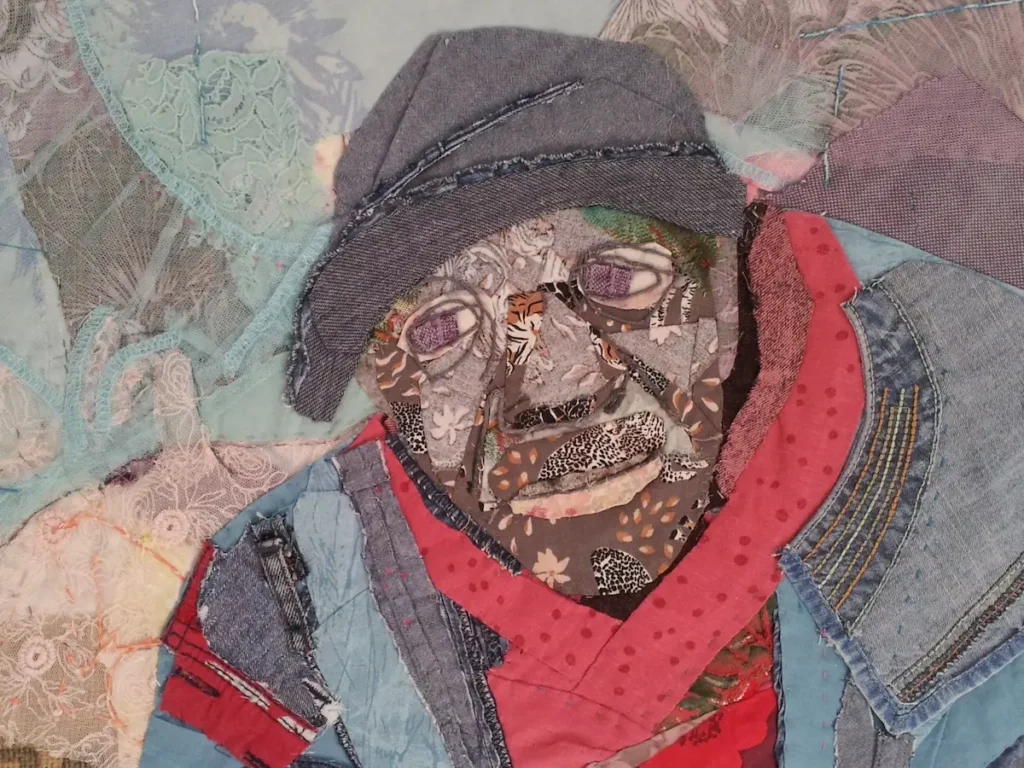
Which part of the design process is your favorite? Which part is a challenge for you?
The biggest challenge is to get the faces exactly right. For every face that gets used there are another 5 that didn’t make it, and they each take a long time to make.
My favourite part of making the quilt is when it’s all sewn in place and I can enjoy using string or stitched thread to draw and pull areas together.
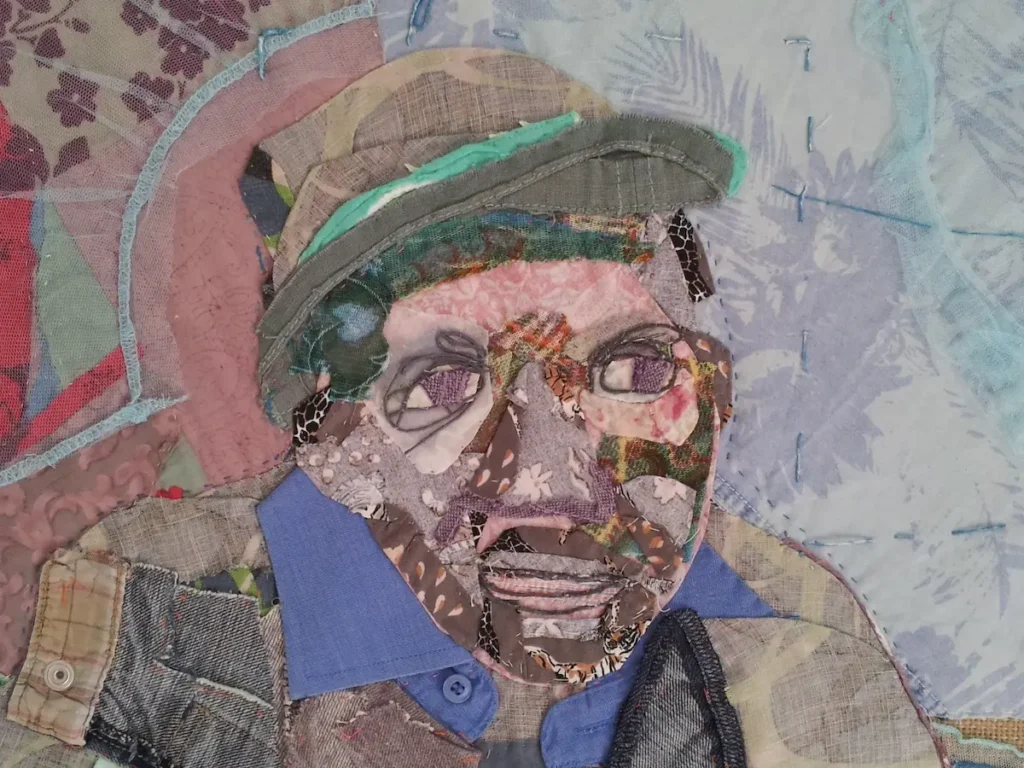
Do you prefer the kind of project that is challenging and requires attention, or the kind where you get in your meditative zone and enjoy the process?
It’s usually a battle and a challenge, that’s what drives me.
The challenge of starting from scratch, feeling my way, discovering new land. There’s a burning curiosity to see how it will turn out, because you can never predict it.
That might mean it sometimes gets crumpled up and thrown across the room in frustration, then you creep back the next day to check if it was really okay.
How has your work evolved over the years? Is there a common thread when the rest is done (pun intended!) across the years?
I never look back and never feel a need to conform to previous work, it’s all new and now.
It’s got more figurative as the need to express what you feel becomes more compelling.
I am more confident that I can start from nothing and rise to any subject.
And now I value every bit of the garment, not just the cherry-picked bits. Including turning clothes inside out to see the internal structure.

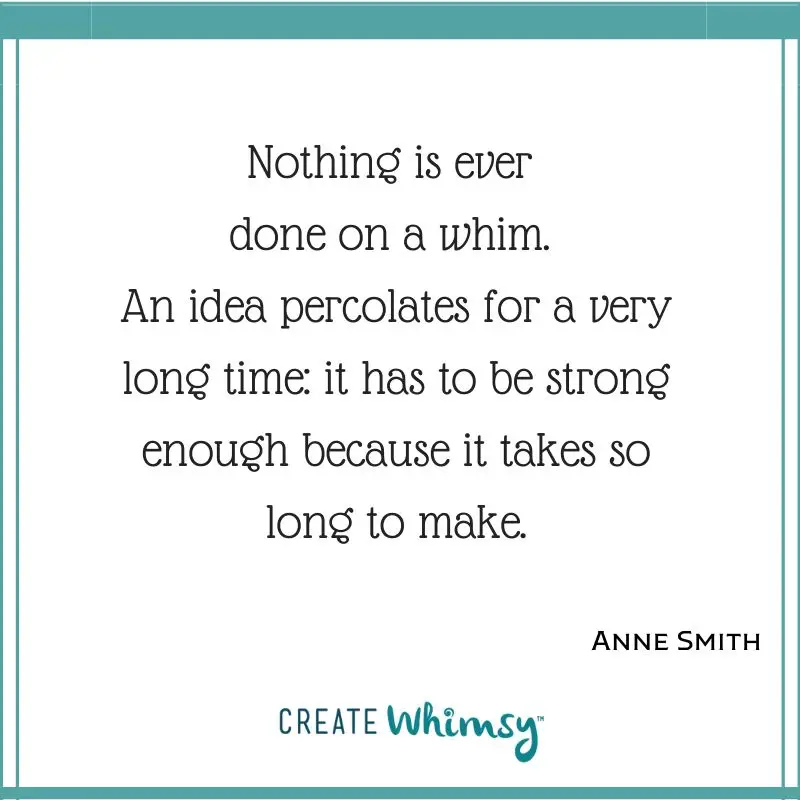
Do you approach your work differently for entering juried shows?
Only in the sense that the bar is high and I thrive on a challenge. I’ve been in Quilt National a few times and I really love getting something ready for that. It’s a bit of extra incentive if something’s going to get hung on the wall and seen.
Where can people see your work?
There’s the website, www.anne-smith.weebly.com
I’ve had a few exhibitions and been in a few competitions, but I have no commercial head, they’re all stacked in boxes. I’m only interested in the one I’m working on and the one after that, which drives my husband crazy.
Interview posted August 2025
Browse through more inspiring art quilts on Create Whimsy.

